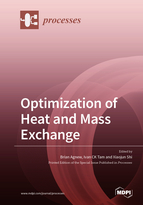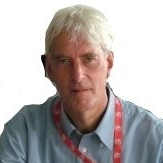Optimization of Heat and Mass Exchange
A special issue of Processes (ISSN 2227-9717). This special issue belongs to the section "Energy Systems".
Deadline for manuscript submissions: closed (15 September 2019) | Viewed by 51781
Special Issue Editors
Interests: thermal power systems; refrigeration; combined cycles; internal combustion engines; finite time thermodynamics
Special Issues, Collections and Topics in MDPI journals
Interests: engine combustion process; exhaust emission control; energy management; renewable energy; cryogenic technology
Special Issues, Collections and Topics in MDPI journals
Special Issue Information
Dear Colleagues,
Heat and mass transfer together with fluid dynamics are three related topics that frequently occur simultaneously in many situations; in fact, the occurrence of only one of these phenomena alone is the exception rather than the rule. The basic equations that describe these phenomena are closely related, and the mathematical techniques for understanding them are very similar. It is therefore sensible to consider these topics together as a unitary subject. This is the approach we have adopted for this Special Issue.
The needs of society are often a driving force for engineering research and scientific advancement. We live in an era in which global warming and atmospheric pollution are of great concern to the extent that they are stimulating research on energy efficiency and means to reduce pollution processes. This is a significant challenge that, if addressed wisely, will have far-reaching effects on sustainable life on our planet. To meet these dual challenges, consideration needs to be given to energy efficiency and pollution reduction through the development of new ideas, processes and practices that can minimise the limitations imposed by the second law of thermodynamics and of optimisation processes that can extract the largest useful return for energy utilisation.
In this Special Issue on " Optimization of Heat and Mass Exchange”, we welcome review articles and original research papers, fundamental, applied, theoretical, numerical or experimental on heat and mass transport phenomena. Topics include, but are not limited to:
- Heat exchanger design
- Two-phase flows
- Droplet formation
- Nano-fluids
- Particle dynamics
- Turbulent transport
- Boiling and condensation
- Bubble dynamics
- Entropy generation in heat and fluid flow
- Heat Sinks;
- Numerical simulation of momentum heat and mass transfer
- Flow and heat transfer in micro-channels
- Phase-change materials
- Practical applications
Prof. Dr. Brian Agnew
Dr. Ivan C. K. Tam
Dr. Xiaojun Shi
Guest Editors
Manuscript Submission Information
Manuscripts should be submitted online at www.mdpi.com by registering and logging in to this website. Once you are registered, click here to go to the submission form. Manuscripts can be submitted until the deadline. All submissions that pass pre-check are peer-reviewed. Accepted papers will be published continuously in the journal (as soon as accepted) and will be listed together on the special issue website. Research articles, review articles as well as short communications are invited. For planned papers, a title and short abstract (about 100 words) can be sent to the Editorial Office for announcement on this website.
Submitted manuscripts should not have been published previously, nor be under consideration for publication elsewhere (except conference proceedings papers). All manuscripts are thoroughly refereed through a single-blind peer-review process. A guide for authors and other relevant information for submission of manuscripts is available on the Instructions for Authors page. Processes is an international peer-reviewed open access monthly journal published by MDPI.
Please visit the Instructions for Authors page before submitting a manuscript. The Article Processing Charge (APC) for publication in this open access journal is 2400 CHF (Swiss Francs). Submitted papers should be well formatted and use good English. Authors may use MDPI's English editing service prior to publication or during author revisions.
Keywords
- Heat transfer
- Mass transfer
- Nano-fluids
- Computational Fluid Dynamics
- Particle dynamics
- Droplet formation
- Two phase flows








